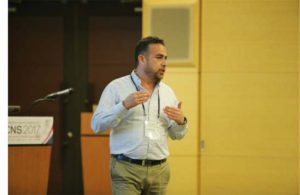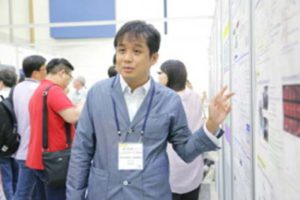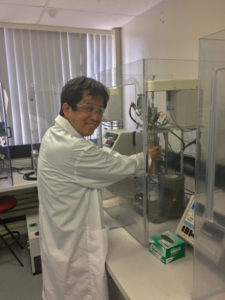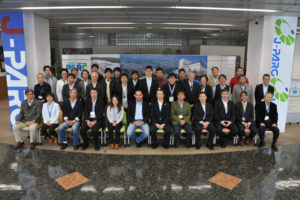2018.10.24
ANSTO’s National Deuteration Facility Helping the Establishment of the Japanese Chemical Deuteration Facility.
The National Deuteration Facility (NDF) of the Australian Nuclear Science and Technology Organisation (ANSTO) is Australia’s national facility for isotopic labelling of molecules with the stable, non-radioactive isotope deuterium (2H) using chemical or biological (in vivo) processes, and it is the only such facility in the Asia- Pacific region. The deuterated molecules produced at the NDF are used in experiments by Australian and international researchers in the fields of structural biology, nanotechnology, energy and polymer science amongst others in order to enhance contrast, and reduce background noise when conducting structural studies using neutron scattering instruments, or using spectroscopic techniques such as Nuclear Magnetic Resonance (NMR), Infra-Red (IR) or Mass Spectrometry (MS).
Dr Tamim Darwish is a senior research scientist and leader of the chemical deuteration team of the NDF. He obtained his PhD from the University of New South Wales in 2006 and subsequently held postdoctoral positions at the University of Sydney (2006) and the Institute of Materials Engineering at ANSTO (2007). In 2010, he was awarded an invitation fellowship from the Japan Society for the Promotion of Science (JSPS) to build collaborations with Hokkaido University on the use of deuterated materials and sum frequency generation spectroscopy (SFG).
The diversity of research and potential end applications of molecular deuteration is great and growing, especially in the field of neutron science. This potential has also been recognized in Japan where scientists from the Japan Proton Accelerator Research Complex (J-PARC), Comprehensive Research Organisation for Science and Society (CROSS), Japanese Atomic Energy Agency (JAEA), and Kyoto University have commenced development of biodeuteration capabilities as well as an interest in chemical deuteration techniques for structural investigations using neutron scattering. For this and under the Memorandum of Understanding between ANSTO and J-PARC, Dr Kazuhiro Akutsu, a young deuteration scientist from J-PARC and CROSS, has visited the NDF three times since the beginning of this year to learn some of the chemical deuteration techniques that are used at the NDF. More recently, Dr Darwish was invited as a plenary speaker to the J-PARC workshop 2017. The workshop was entitled “Deuterated Materials Enhancing Neutron Science for Structure Function Applications”, held at Ibaraki Quantum Research Centre, Tokai, Japan on October 19-20, 2017, and it was attended by 62 participants, including heads of institutes, neutron, NMR and industrial researchers.


Dr Akutsu and Darwish are presenting their work at the International Conference on Neutron Scattering ICNS-2017, 9-13 July 2017, Daejeon, Korea.
One of Dr Akustu’s and Darwish’s research interests is studying the structure of the electric double layer in ionic liquids (ILs) using neutron reflectometry and deuteration techniques. Low melting imidazolium salts are one of the most popular and widely used ionic liquids. Due to their low vapor pressures and thermal stability, ILs have been widely studied and employed in many applications such as synthesis and catalysis solvents, extraction solvents, electrolyte, and biopolymer solvents. However, in many case, structural analysis of IL samples is difficult because the X-ray and neutron scattering contrast between the ILs and the organic solute is not enough to allow different elements to be clearly resolved. Partial or complete deuteration of organic compounds for contrast variation in the scattering length densities of materials is one of the most effective techniques in the application of neutron scattering analysis. Therefore, deuteration is ideally suited for the structural analysis of IL samples using neutron scattering techniques. In this particular study, several kinds of deuterated 1-alkyl-3-methylimidazolium ionic liquids were synthesized at the NDF and the electric double layer structure in ILs was studied using neutron reflectivity technique at J-PARC.
Original article published in JSPSAAA Newsletter (2018), issue 2, pp. 9-12, reproduced courtesy of the Japan Society for the Promotion of Science – Alumni Association in Australia.



